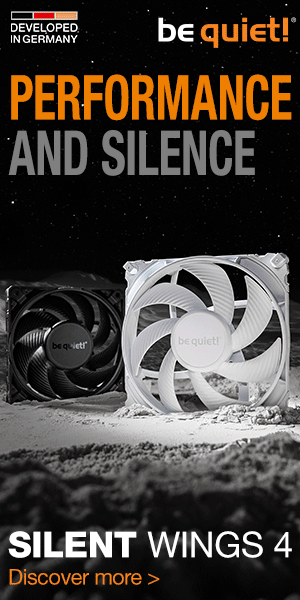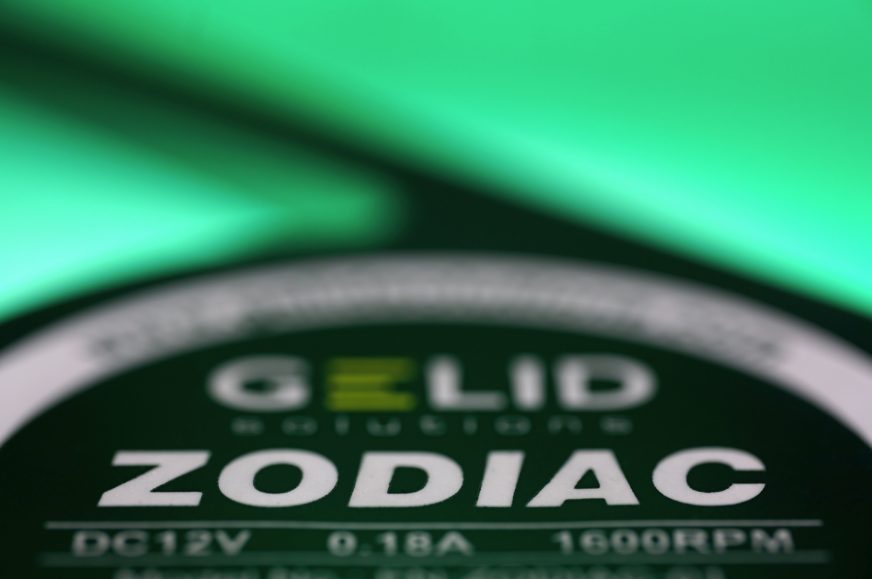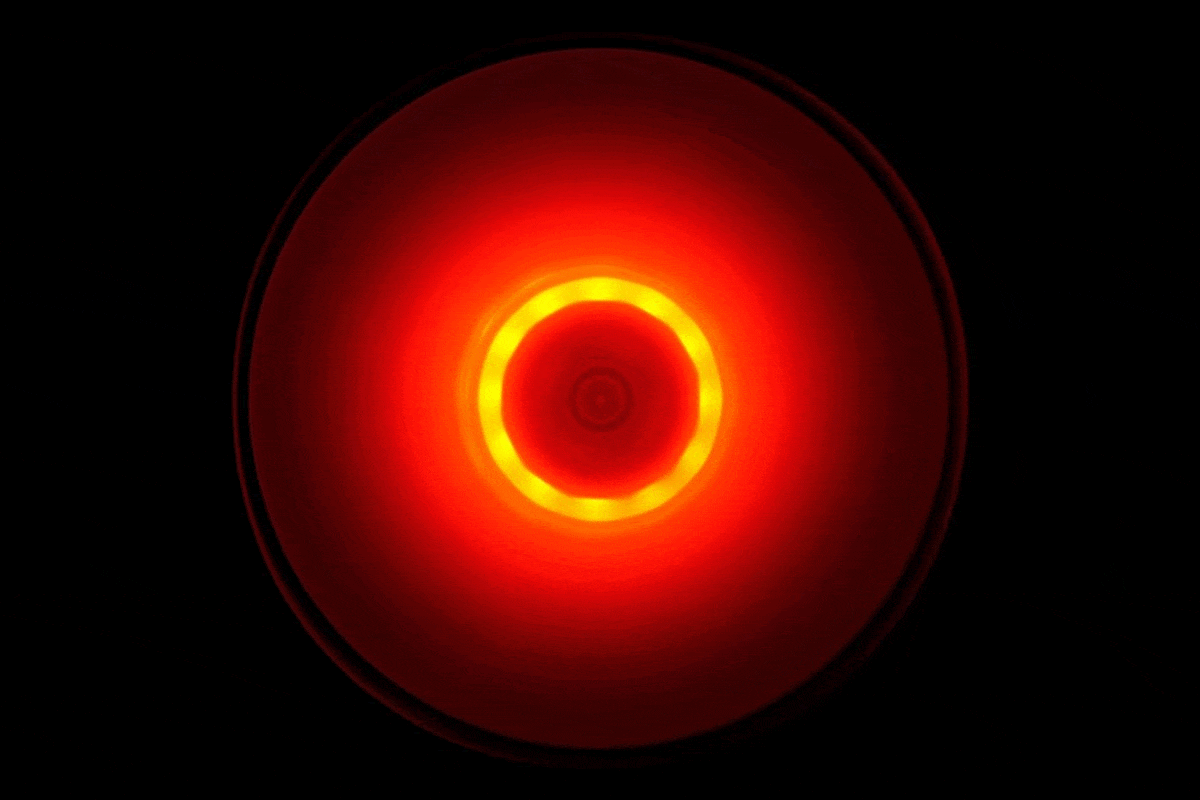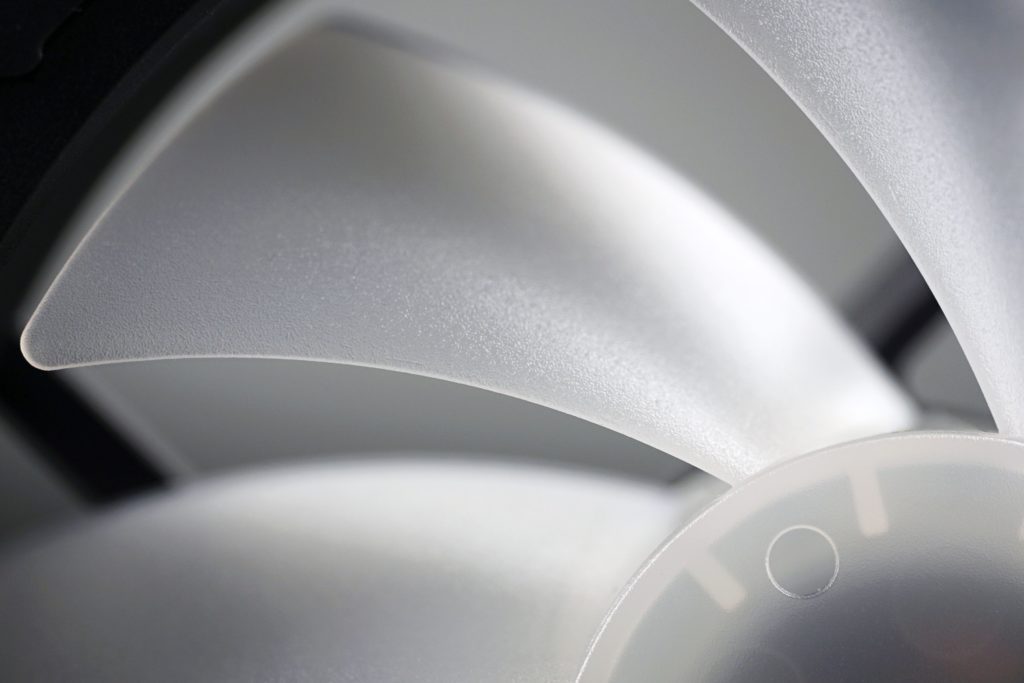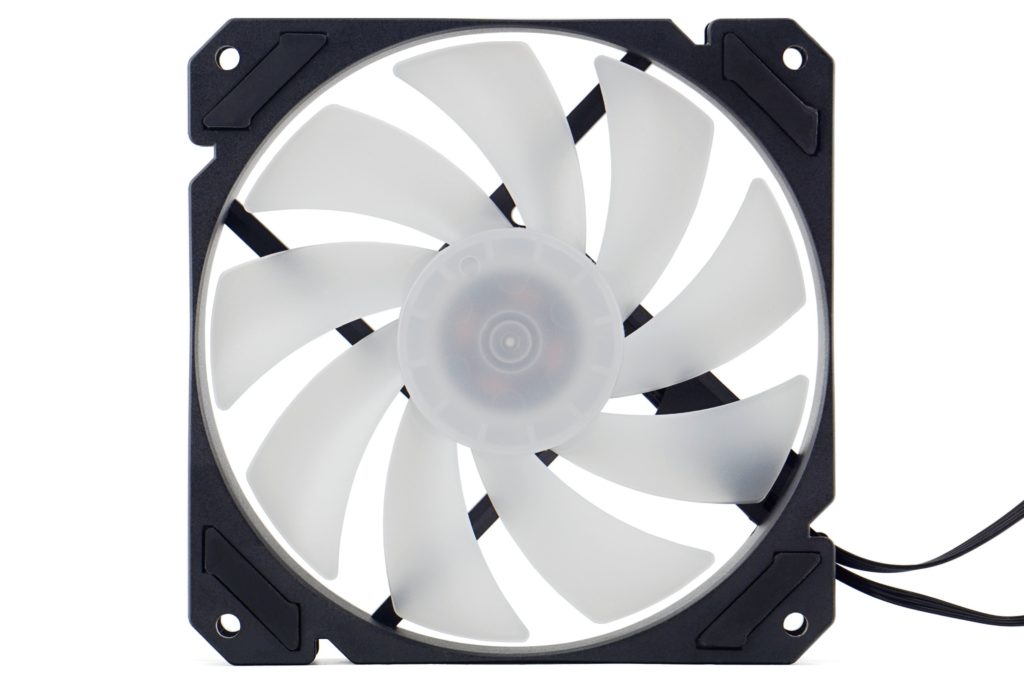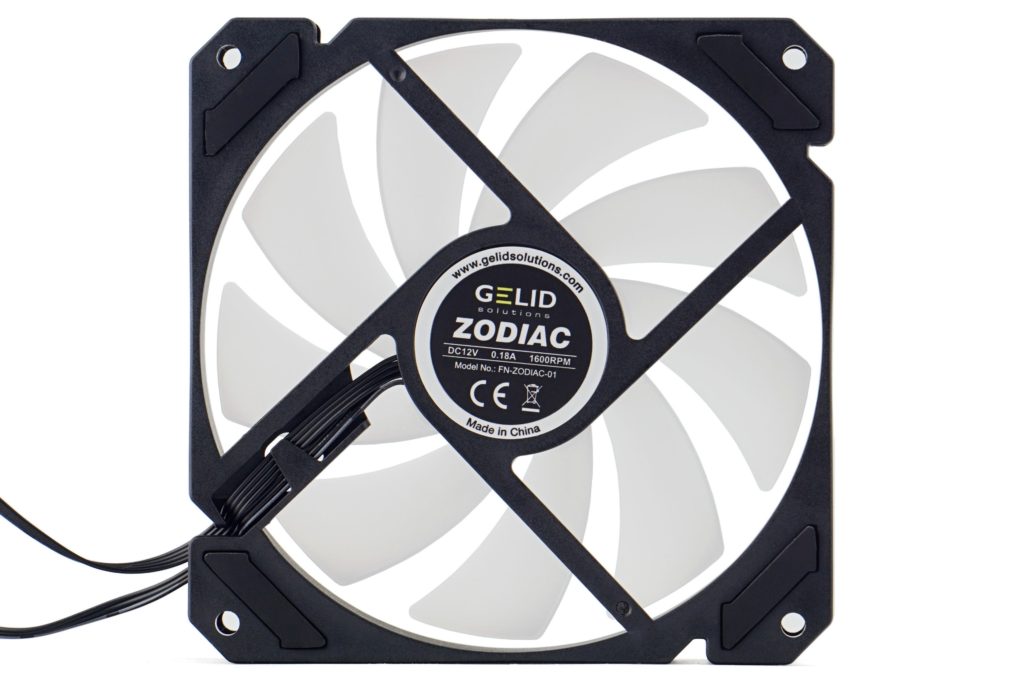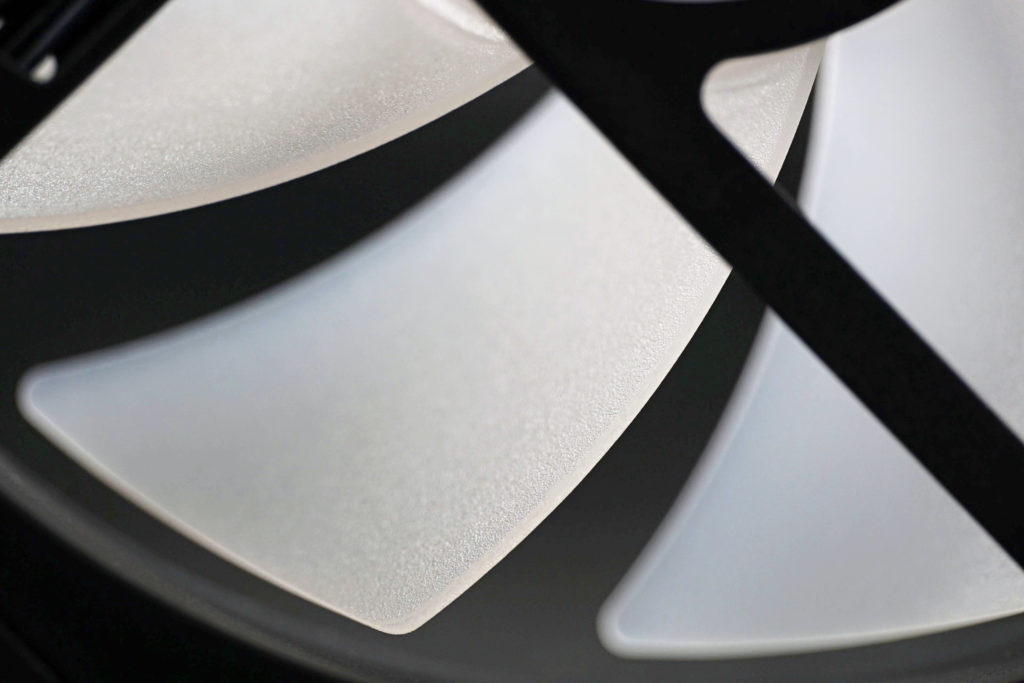Gelid Zodiac in detail
Aside from whether the fan is named after the zodiac or a serial killer from California, we know all about Gelid’s latest fan. In the end, the inspiration may stem from the latter as well. After all, it has a backlight option and at the same time “kills”, performance-wise, the price-equivalent fans without it. And attractive models at that. But there is one thing that can erase all the good features.
We’re going to give the Zodiac Gel test a bit of a broad brushstroke, but you’ll quickly see where we’re going with it. We can probably agree that illuminated fans are for a slightly different target audience than traditional, non-LED fans. Manufacturers often tailor their parameters and overall marketing activities according to this.
You have witnessed many times that with otherwise similar fans, the illuminated variants usually have slightly worse claimed parameters. Whether it’s the latest case of Antec’s new products, Akasa or even BeQuiet! Light Wings are not supposed to be more effective than Silent Wings 3. It’s a pretty natural segmentation, where some fans (with RGB LEDs) have to sell visual features while others (without RGB LEDs) have to sell functional features. And that’s when it’s naturally appropriate that their parameters are in the line above the illuminated fans.
However, the current centre of attention, the Gelid Zodiac fan, has illumination, a very high indicated air flow (111,29 m3/h) and also costs only ten euros. The performance, or let’s say rather the efficiency (it’s relatively easy to set absurdly high speeds, but to achieve efficient operation with an impressive performance-to-noise ratio already requires a knack) is supposed to be higher than that of the BeQuiet! Pure Wings 2, which is a fan for the same money, but without the light show options. And that is remarkable.
Tvar rotora je podobný ako u ventilátora Arctic BioniX F120, ktorý, ako už viete, veľmi výrazne brzdia prekážky. Lopatky Gelid Zodiac vyznačuje takisto relatívne menší sklon (aj keď je o trochu väčší než u BioniX F120), ale zase sú po celej dĺžke širšie. Menšie sú tak medzi lopatkami aj vzájomné medzery, ktorých rozstupy sa, samozrejme, podieľajú na intenzite vzduchu, ktoré je ventilátor schopný pretlačiť cez prekážku.
The static pressure will not be that high here. JFirstly, the ends of the blades have a relatively large spacing from the frame of about 2.5 mm, but also in the parameters Gelid lists a relatively low 1.48 mm H2O. It should be added that the blades are quite flexible and soft. In flight, especially at higher speeds, they will be subject to more deformation, which does not add to the performance.
Considering the lower price range and the fact that the fan has up to twelve brightly colored LEDs, the build quality is definitely above standard. There are no chips left on the edges, which indicates the higher quality standard of the injection mould. The frame is also solid, and what’s more, there are also rubber pads in the corners to eliminate vibrations. They are also made with a relatively soft material (with a hardness of approximately 35 Shore), so they will be quite effective as well.
However, we did not expect significant vibrations due to the use of hydrodynamic bearings, but these are naturally related to centering accuracy and, in lighter designs, turbulence. At 126 grams, the Zodiac’s weight is rather below average for the proportions of 120mm fans.
Before we get into the analysis of the results, let’s praise the long (50 cm) flat cables and up to two ARGB LED connectors. The second one, for connecting in series, will certainly not be lost in current PC setups.
| Brand and model of fan | Paper specicifations * | Price [EUR] | ||||||||
| Format (and thickness) in mm | Connecting | Speed [rpm] | Airflow [m3/h] | Static pressure [mm H2O] | Noise level [dBA] | Bearings | MTBF [h] | |||
| Motor | RGB LED | |||||||||
| Gelid Zodiac | 120 (25) | 4-pin (PWM) | 3-pin (5 V) | 700–1600 | 111.29 | 1.47 | 35.0 | hydrodynamic | N/A | 10 |
| Fractal Design Dynamic X2 GP-12 PWM | 120 (25) | 4-pin (PWM) | N/A | 500–2000 | 148.83 | 0.51–2.30 | 10.0–32.2 | rifle | 100 000 | 12 |
| BeQuiet! Pure Wings 2 (BL039) | 120 (25) | 4-pin (PWM) | N/A | 1500 | 87.00 | 1.25 | 19.2 | rifle | 80 000 | 11 |
| Gigabyte Aorus 120 ARGB | 120 (25) | 4-pin (PWM) | 3-pin (5 V) | 800–1700 | 31.47–69.40 | 0.37–1.48 | 7.3–28.6 | sleeve | 73 500 | 25 |
| Arctic BioniX P120 A-RGB | 120 (30) | 4-pin (PWM) | 3-pin (5 V) | 400–2300 | 81.55 | 2.10 | 33.4 | fluid | N/A | 21 |
| Akasa OTTO SF12 | 120 (25) | 4-pin (PWM) | N/A | 0–2000 | 164.84 | 3.59 | 7.1–31.7 | ball | 80 000 | 22 |
| Cooler Master SickleFlow 120 ARGB | 120 (25) | 4-pin (PWM) | 3-pin (5 V) | 680–1800 | 105.34 | 2.50 | 8.0–27.0 | rifle | 160 000 | 15 |
| Alphacool SL-15 PWM | 120 (15) | 4-pin (PWM) | N/A | 600–1800 | 71.40 | 1.20 | 32.0 | ball | 50 000 | 11 |
| Arctic BioniX F120 | 120 (25) | 4-pin (PWM) | N/A | 200–1800 | 117.00 | 2.10 | 20.0 | fluid | N/A | 10 |
| SilverStone SST-AP123 | 120 (25) | 3-pin (DC) | N/A | 1500 | 96.84 | 1.46 | 23.8 | fluid | 50 000 | 25 |
| Noctua NF-P12 redux-1700 PWM | 120 (25) | 4-pin (PWM) | N/A | 400–1700 | 120.20 | 2.83 | 25.1 | SSO | 150 000 | 13 |
| SilentiumPC Fluctus 120 PWM | 120 (25) | 4-pin (PWM) | N/A | 300–1800 | N/A | N/A | N/A | fluid | 100 000 | 12 |
| MSI MEG Silent Gale P12 | 120 (25) | 4-pin (PWM) | N/A | 0–2000 | 95.48 | 2.21 | 22.7 | hydrodynamic | 50 000 | 31 |
| Asus ROG Strix XF120 | 120 (25) | 4-pin (PWM) | N/A | 1800 | 106.19 | 3.07 | 22.5 | „MagLev“ | 400 000 | 23 |
| Akasa Vegas X7 | 120 (25) | 4-pin (PWM) | 4-pin (12 V) | 1200 | 71.19 | N/A | 23.2 | fluid | 40 000 | 11 |
| Reeven Coldwing 12 | 120 (25) | 4-pin (PWM) | N/A | 300–1500 | 37.54–112.64 | 0.17–1.65 | 6.5–30.4 | sleeve | 30 000 | 12 |
| Reeven Kiran | 120 (25) | 4-pin (PWM) | shared | 400–1500 | 110.10 | 2.95 | 33.6 | fluid | 120 000 | 17 |
| SilentiumPC Sigma Pro 120 PWM | 120 (25) | 4-pin (PWM) | N/A | 500–1600 | 79.00 | N/A | 15.0 | hydraulic | 50 000 | 7 |
| SilentiumPC Sigma Pro Corona RGB 120 | 120 (25) | 4-pin (PWM) | 4-pin (12 V) | 1500 | 56.58 | N/A | N/A | hydraulic | 50 000 | 12 |
| SilverStone SST-AP121 | 120 (25) | 3-pin (DC) | N/A | 1500 | 60.08 | 1.71 | 22.4 | fluid | 50 000 | 18 |
| SilverStone SST-FQ121 | 120 (25) | 7-pin (PWM) | N/A | 1000–1800 | 114.68 | 0.54–1.82 | 16.4–24.0 | fluid | 150 000 | 20 |
| Xigmatek XLF-F1256 | 120 (25) | 3-pin (DC) | N/A | 1500 | 103.64 | N/A | 20.0 | rifle | 50 000 | 16 |
* When reading performance values, a certain amount of tolerance must always be taken into account. For maximum speeds, ±10 % is usually quoted, minimum speeds can vary considerably more from piece to piece, sometimes manufacturers will overlap by as much as ±50 %. This must then also be adequately taken into account for air flow, static pressure and noise levels. If only one value is given in a table entry, this means that it always refers to the situation at maximum speed, which is achieved at 12 V or 100 % PWM intensity. The manufacturer does not disclose the lower limit of the performance specifications in its materials in that case. The price in the last column is always approximate.
- Contents
- Gelid Zodiac in detail
- The basis of the methodology, the wind tunnel
- Mounting and vibration measurement
- Initial warm-up and speed recording
- Base 7 equal noise levels…
- .. and sound color (frequency characteristic)
- Static pressure measurement…
- … and airflow
- Everything changes with obstacles
- How we measure power draw and motor power
- Measuring the intensity (and power draw) of lighting
- Results: Speed
- Results: Airlow w/o obstacles
- Results: Airflow through a nylon filter
- Results: Airflow through a plastic filter
- Results: Airflow through a hexagonal grille
- Results: Airflow through a thinner radiator
- Results: Airflow through a thicker radiator
- Results: Static pressure w/o obstacles
- Results: Static pressure through a nylon filter
- Results: Static pressure through a plastic filter
- Results: Static pressure through a hexagonal grille
- Results: Static pressure through a thinner radiator
- Results: Static pressure through a thicker radiator
- Results: Static pressure, efficiency by orientation
- Reality vs. specifications
- Results: Frequency response of sound w/o obstacles
- Results: Frequency response of sound with a dust filter
- Results: Frequency response of sound with a hexagonal grille
- Results: Frequency response of sound with a radiator
- Results: Vibration, in total (3D vector length)
- Results: Vibration, X-axis
- Results: Vibration, Y-axis
- Results: Vibration, Z-axis
- Results: Power draw (and motor power)
- Results: Cooling performance per watt, airflow
- Results: Cooling performance per watt, static pressure
- Airflow per euro
- Static pressure per euro
- Results: Lighting – LED luminance and power draw
- Results: LED to motor power draw ratio
- Evaluation



